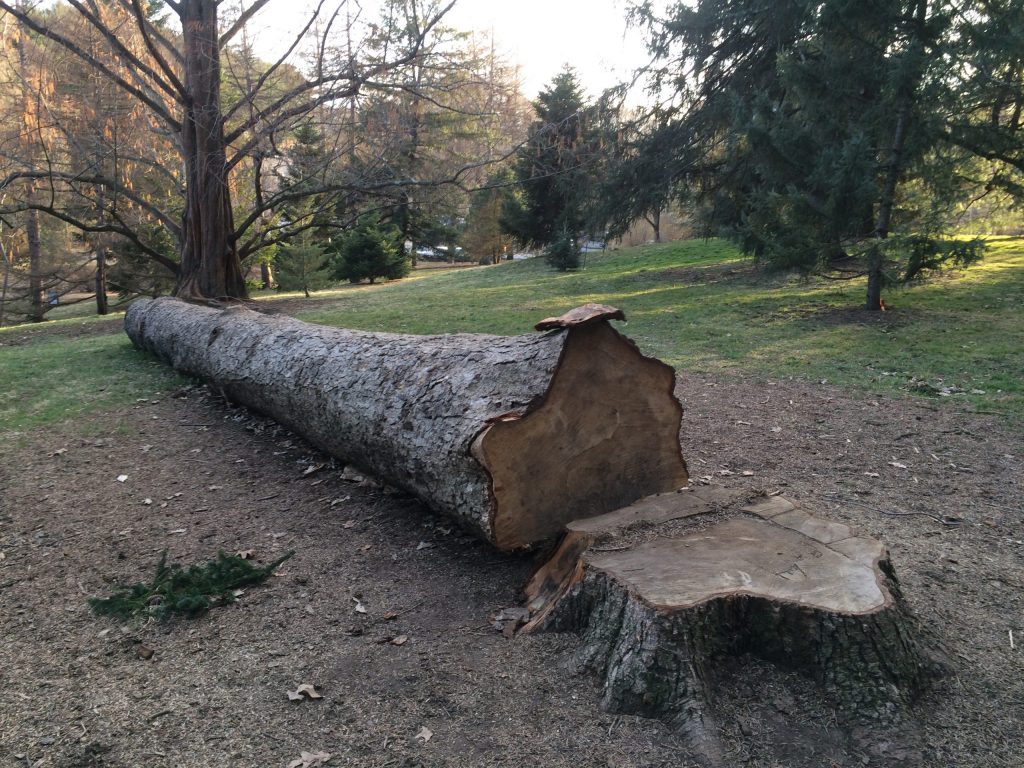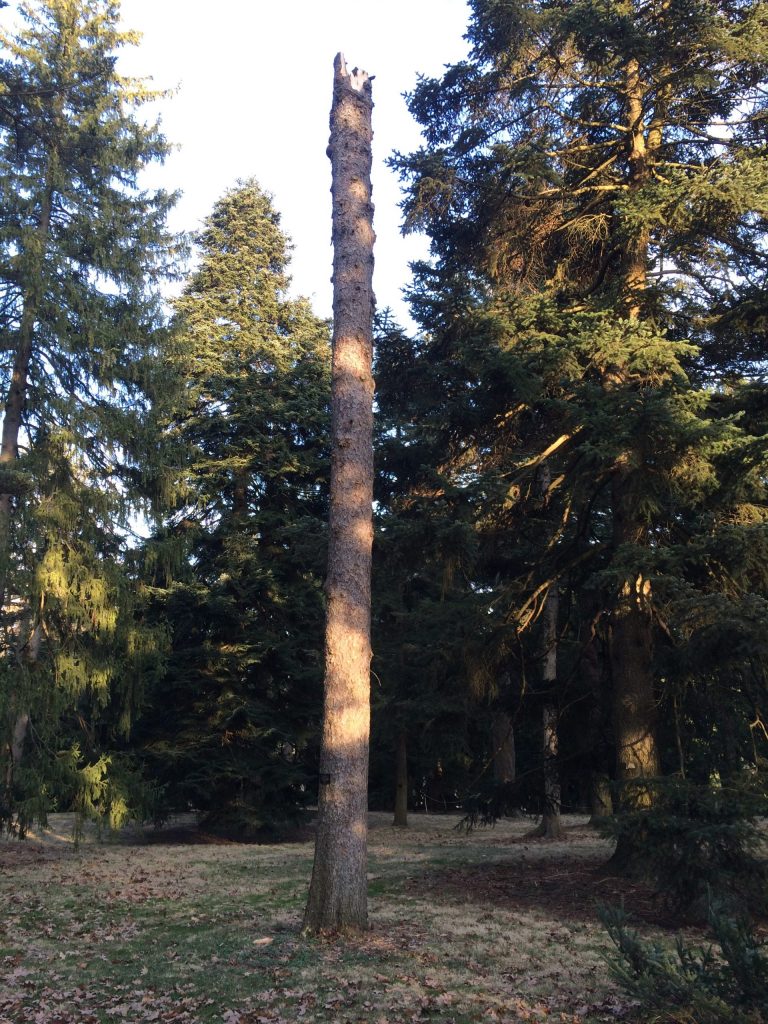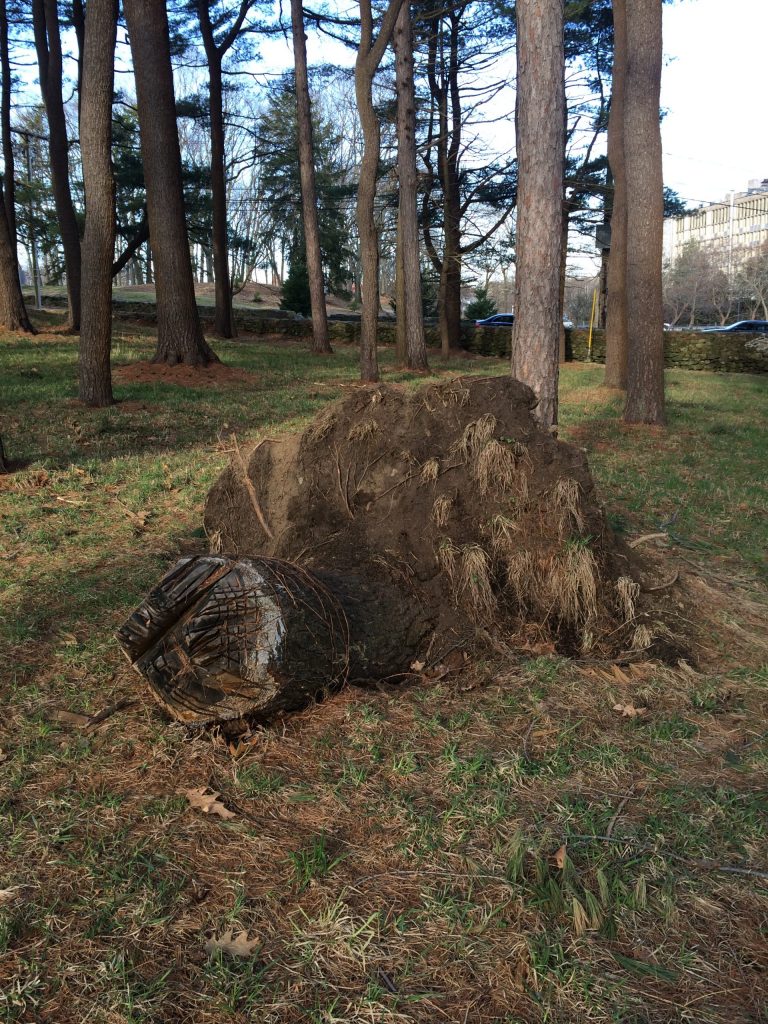When trees are felled at the Arboretum, the vast majority of the dead material is chipped into mulch and used throughout the grounds. However, chippers do not exist in natural systems, where the decomposition of woody plants slowly releases nutrients back into the soil while providing habitat for wildlife. The horticulture crew has recently begun highlighting this process by selectively leaving logs, snags, and stumps in our urban ecosystem. These additions will rot away over time, old trees nourishing new life in the living collections.

Visitors will likely have noticed several of these logs placed near Mendum and Peters Hill Gates, as well in the beech, conifer, and maple collections. Over the years, they will begin to soak up water and may become nurseries for seedlings, mosses, and fungi (although any plants will have to compete with playing children for growing space). Rotting logs also provide habitat for invertebrates such as the larvae of ferocious looking (but docile) reddish brown stag beetles and industrious carpenter ants.

In addition to the logs, our arborists increasingly leave dead trees standing as snags rather than simply removing them. After cutting away hazardous limbs, they use a coronet cut to provide a fractured appearance to the top of the tree. These trees emulate the ecological value of snags as wildlife habitat. Northern flickers and red bellied, downy, and hairy woodpeckers all prefer to excavate nest cavities in somewhat rotten trees. Pileated woodpeckers, rarely seen in the Arboretum, only live in forests with abundant snags since these trees provide habitat for their preferred foods, ants and larvae.
Uprooted stumps are also occasionally preserved in the collection, notably on Peters Hill. Pit and mound formation caused by centuries of falling and decomposing trees are common in mature forest but rare in manicured urban environments. The disturbance they create opens up soil and provides a diversity of moisture gradients for plants and organisms to inhabit. The dark crevices and moist soil beneath these stumps could provide homes for red backed salamanders (the only species of salamander found at the Arboretum) which requires decaying wood and blankets of moist leaves to survive.

While the sight of logs and snags in the Arboretum may not be to everyone’s taste, a landscape without them would likewise seem sterile to the organisms they shelter and feed. For trees, decay completes a circle and flows to nourishing new life. Our cultivating of decomposition is just a small way to highlight this cycle, one often overlooked in the urban environment.
